
Display Week has once again come and gone. I was there to live it, see it, and dare I say feel it too. The energy and excitement are palpable, and no one can deny that this is the place to be if you are in the display industry.
I spent a lot of time shuffling between booths on the exhibit floor and the technical symposium, especially those related to quantum dots and MicroLEDs. On the exhibit floor, it was clear that every technology was trying to claim they would be the best solution for future automotive displays. And it’s not surprising, seeing as the automotive market for displays will blossom as EV adoption continues to rise to 36% of global vehicle sales in Q4 2024 compared to 25% in Q1 2023 (this includes hybrid electric, plug-in hybrid, and full electric). Counterpoint Research did a nice job summarizing the status of the vehicle display market during the business conference, showing that displays are increasingly becoming a differentiating feature for vehicles, especially as we move towards autonomous vehicles. One need only observe the trend in the average vehicle display size, which has been steadily increasing in recent years and will likely continue to do so. Interestingly, EVs have much larger displays compared to hybrid compared to ICE vehicles. But the trend for all is larger and larger!
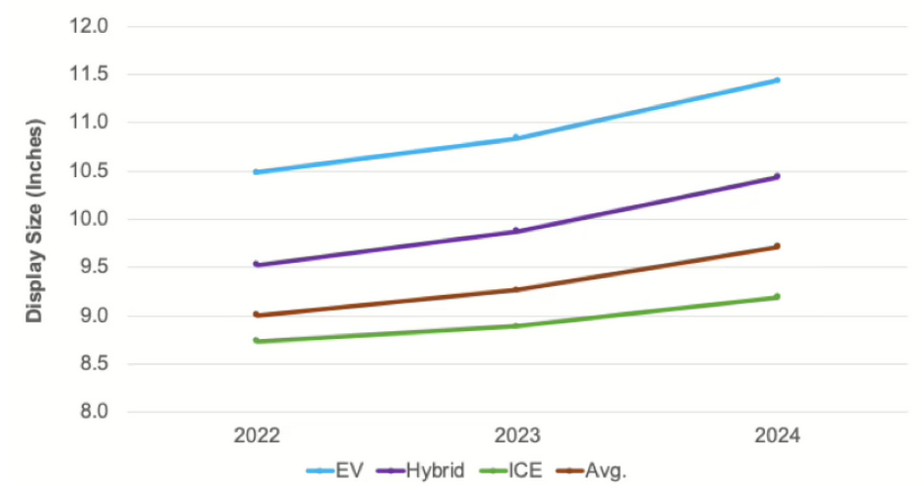
Average display size in vehicles. (Source: Counterpoint Research, SID Business Conference 2025.)
There were some incredible-looking OLED and MicroLED vehicle displays on the show floor, including pillar-to-pillar OLED displays with phenomenal image quality and giant MicroLED displays in the ceiling of cars. But so far, very few of these are commercially available. Since the design-in time for vehicles can be multiple years, I’m hopeful we will see these in the late 2020s.
While OLED and MicroLED would like to boast superior performance in vehicles, the fact of the matter is that nearly all vehicle displays today are LCD—99% by area according to Counterpoint Research. The small remainder are OLED, found mostly in high-end vehicles. While I have concerns about the longevity of new display technology in vehicles baking in the sun for 10 hours a day, I also know that the testing requirements for vehicles are incredibly harsh. I just hope that those of us who hold on to cars for 15 years are still able to enjoy the displays through the life of the car.
A technology area I follow closely is electroluminescent QLED (EL-QLED). In recent years, we have seen substantial progress in moving from pixel-level testing to impressive displays based on self-emissive EL-QLED pixels. A highlight at the show this year was Samsung’s 400 nit (full white) EL-QLED display made with inkjet printing. This is an impressive step up from the 250 nit display shown last year, and I could really envision a product based on this technology. Perhaps a laptop screen, tablet, or computer monitor?
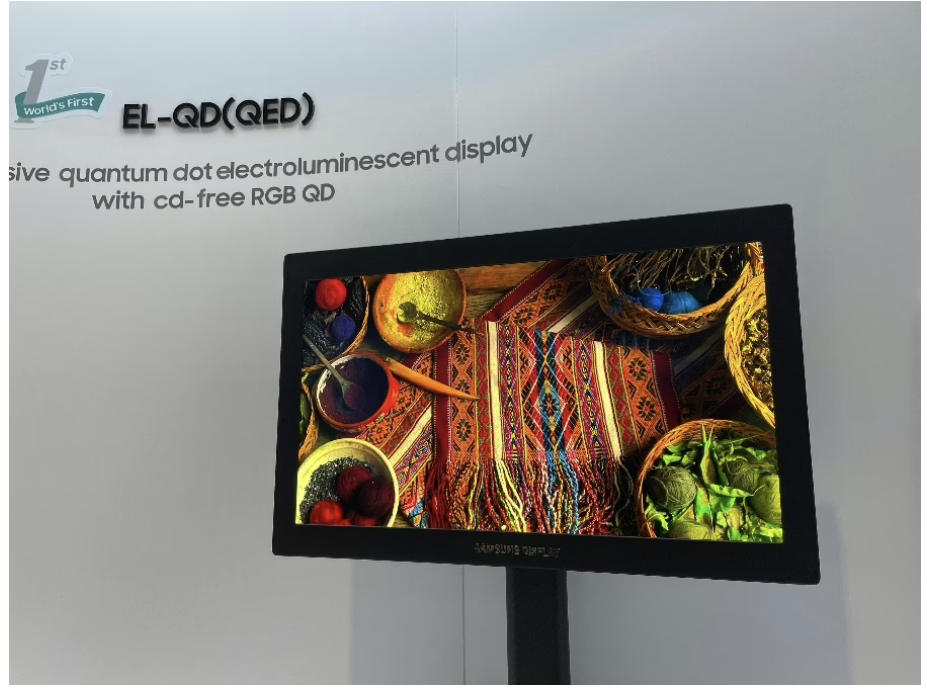
Samsung’s EL-QLED demo. (Source: Palomaki Consulting)
BOE also showed an impressive EL-QLED demo with >90% BT2020 color gamut and patterned by photolithography.
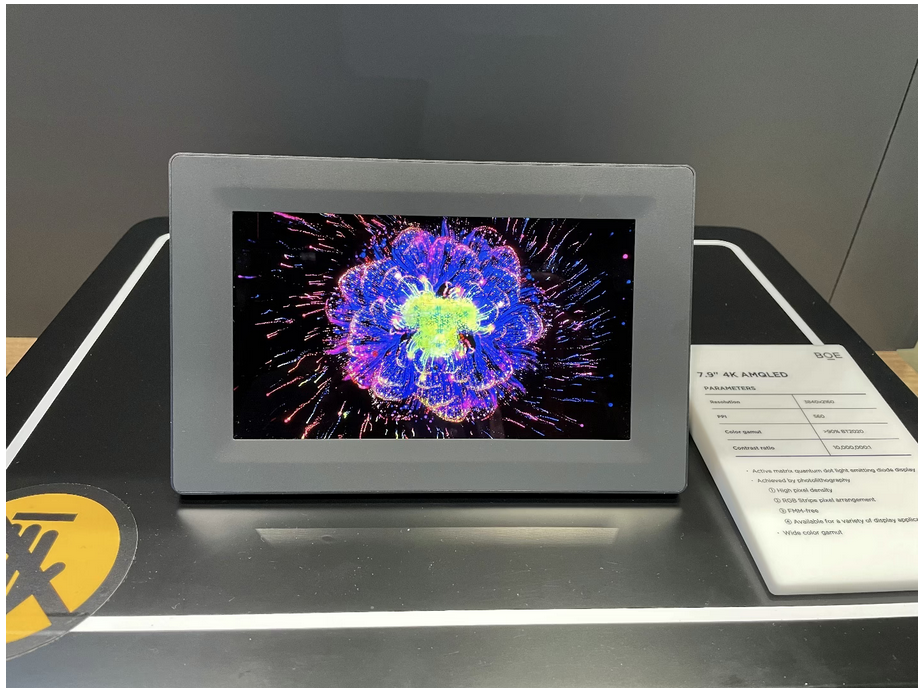
BOE’s EL-QLED display. (Source: Palomaki Consulting)
While the demos were impressive, the real research at Display Week is found in the technical symposium. This is where we get a sense of how close a certain technology is to commercial readiness. There have been strong improvements in both red and green EL-QLED lifetime for both Cd-based and Cd-free versions. One could make the case that the technology is ready for prime time in these colors. TCL presented results showing ~20,000 hours of lifetime for red and green EL-QLED devices (T95, 1000 nits). However, in comparison, the blue lifetime was only ~200 hours. You may see headlines about other blue lifetimes that are much longer, but I caution you to investigate the way lifetime is defined. Often T50, 100 nits is used for blue devices. While blue still seems a long way off from commercial viability, I’m reminded of how blue OLED still lags far behind green and red. For example, TCL itself showed IJP blue OLED has improved significantly since 2020, from <50 hours to 300 hours (T95, 1000 nits).
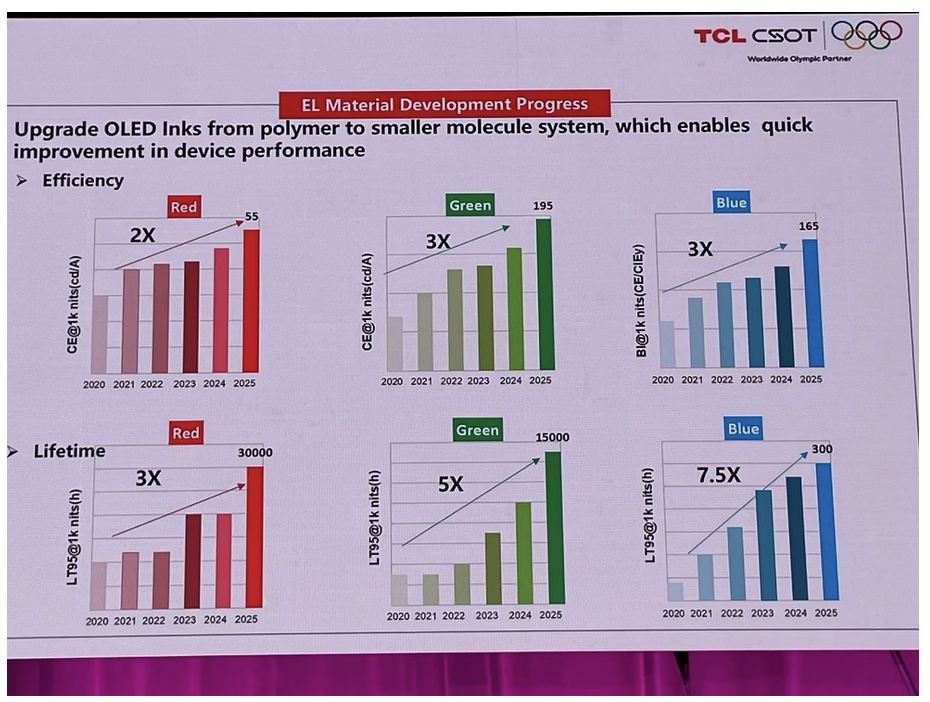
Progress in TCL IJP OLED efficiency and lifetime. (Source: Palomaki Consulting)
By comparison, blue evaporated OLED lifetime is only marginally better, still falling short of 1000 hours under the same conditions.
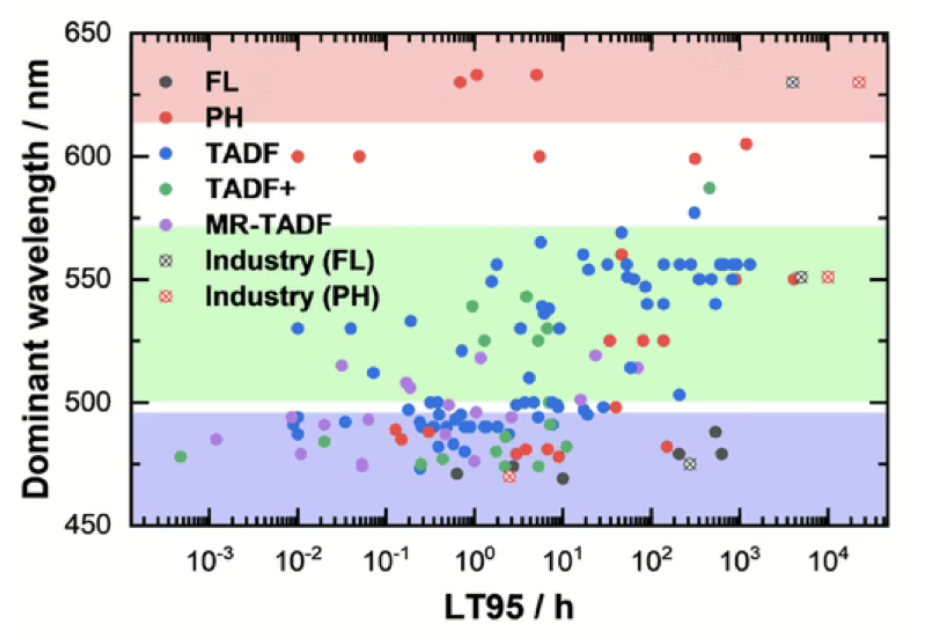
Literature summary of evaporated OLED lifetime, LT95 at 1000 nits. (Source: ACS)
All of this is to say, maybe 200 hours for blue isn’t that far off? It is a tough technology to solve though, with representatives from Samsung, BOE, and TCL all admitting that blue EL-QLED is, for now, holding back commercialization.
There were many more exciting technology takeaways from SID Display Week 2025 that I can’t fit in here. Suffice to say, I’ll be back again next year to see what the future of display technology holds!
Name: lily
Mobile:185 7332 9919
Tel:185 7332 9919
Whatsapp:8618573329919
Email:sales@huayuan-lcd.com
Add:Factory No.9, Zhongnan High-tech Intelligent Manufacturing Industrial Park, Tianyuan District, Zhuzhou,Hunan, China, 412000